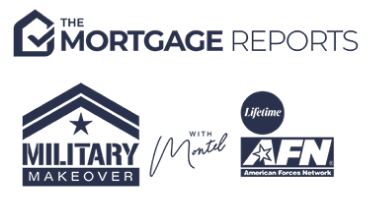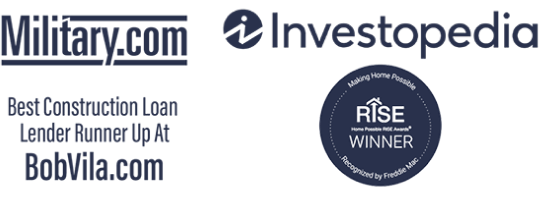ADU Financing Guide: Pros and Cons of Accessory Dwelling Units
Accessory Dwelling Units (ADUs) are transforming backyards and basements nationwide—offering a blend of rental income, added living space, and a boost in property value. Yet, not all lenders provide a clear path to ADU financing. This guide unveils crucial financing methods, details on types of ADUs, and a unique $50,000 Extra funding option that can make a homeowner’s ADU dream both accessible and affordable. Whether the goal is building, buying, or refinancing, ADUs have never been more attainable.
ADUs, The Increasingly Popular Solution
Many homeowners are exploring ways to finance accessory dwelling units (ADUs), an increasingly popular solution for additional living space, rental opportunities, or multi-generational housing. Few lenders offer comprehensive ADU financing, but there are programs—including specialized loans and portfolio products—that cater specifically to this niche. This article discusses core features, financing strategies, and key considerations for homeowners ready to unlock the potential of ADUs.
What Is an ADU and How Can It Be Financed?
An accessory dwelling unit (ADU) is a secondary housing structure on the same lot as a primary residence. These units often take the form of backyard cottages, garage conversions, or basement apartments. Many localities, recognizing the need for more flexible and affordable living arrangements, are revising zoning laws to encourage ADU development.
Common ADU Uses
Rental units for generating supplemental income
Independent living quarters for family members
Home offices or personal studios
Short-term rental accommodations for travelers
Financing Methods for ADUs
ADU Construction Loans
Specialized loans that cover planning, materials, and labor
Often come with tailored terms that align with ADU-building timelines
Home Equity Solutions
Home Equity Line of Credit (HELOC): Flexible but generally variable-rate
Cash-Out Refinance: Replaces the primary mortgage with a higher loan amount, providing cash for construction
Construction-to-Permanent Loans
Funds the building phase, then converts to a standard mortgage post-completion
Eliminates the need for separate refinancing
Each financing route has its pros and cons. Evaluating local regulations, personal finances, and available ADU loan products ensures the right choice.
Introducing Up To *$50,000 Extra: Our Consumer Loan Program
A Robust Funding Option for ADU Projects and More
Many homeowners face cost hurdles when building or upgrading an ADU. Even those with a solid mortgage plan may need additional funds for finishing touches, furnishing, or covering unexpected expenses. Our specialized consumer portfolio loan program is available, offering up to *$50,000 Extra that can be used before or after closing:
Flexible Usage: Ideal for installing a backyard office, expanding a garage conversion, or upgrading an existing ADU.
Debt Consolidation Advantage: Can reduce high-interest debt to improve overall financial standing and possibly qualify for a more significant loan amount.
Streamlined Process: This consumer loan is accessed through the same banker on our team managing the primary mortgage, avoiding complications from separate lenders.
This additional financing sets certain institutions apart, especially those seeking a comprehensive solution to finance the leading property and any ADU-related expenses.
Exploring Different ADU Home Types
When deciding on an ADU, homeowners should consider budget, design, and local zoning constraints. Common variations include:
Detached ADUs
Stand-alone structures separate from the primary residence
Typically, costs more due to independent foundations and utilities
Offer enhanced privacy and design freedom
Attached ADUs
Share walls with the primary home (converted basement, attached garage)
Generally cheaper to build, leveraging the existing structure
Maintain proximity to the main house while still allowing independence
Garage Conversions
Transform underused garages into living areas
Usually, lower-cost renovations since the foundation and walls are already in place
Work well for smaller ADUs or studio-style spaces
Prefabricated (Prefab) ADUs
Manufactured off-site, then delivered and assembled
Faster construction timelines, potential cost savings
Financing varies based on design, materials, and local compliance
Is an ADU a Good Investment?
Rental Income Potential
Due to the high demand for affordable housing and rising utility rates, ADUs can attract renters looking for compact, cost-effective living arrangements. A steady monthly income from a long-term tenant or higher nightly rates via short-term rentals can substantially offset mortgage expenses.
Property Value Increase
An ADU adds livable square footage, which can enhance market appeal. Future buyers often value properties offering versatile living spaces, leading to potential resale premiums.
Lifestyle Flexibility
ADUs suit various needs, such as accommodating returning adult children and elderly parents or serving as a remote office or creative studio. Their adaptability can reduce the need to move or expand the primary residence.
Construction Costs and Financing
Building or renovating an ADU can be expensive. Local labor rates, design complexity, and material costs must be factored in. If using ADU construction loans, it’s critical to understand interest rates, repayment terms, and total affordability.
An ADU’s financial viability depends on location, design strategy, and personal circumstances. Consulting with local authorities and experienced lenders can clarify the scope and potential returns.
Weighing the Pros and Cons of an ADU
Pros
Extra Rental Income
Offset mortgage, taxes, or other expenses
Boost monthly cash flow and long-term financial security
Flexibility and Multi-Use
Adaptable as a guest suite, in-law unit, or dedicated workspace
Can evolve with changing family or personal needs
Boost in Property Value
Increases overall livable square footage
Attracts future buyers seeking added versatility
Independence and Privacy
Often includes a separate entrance, kitchen, and bath
Minimizes disruptions to the primary residence
Cons
Upfront Construction Costs
Potentially high out-of-pocket expenses or financing charges
May require specialized ADU construction loans or tapping home equity
Regulations and HOA Restrictions
Local ordinances, permits, and homeowners association rules can hinder or limit ADU projects
Thorough research is necessary before starting
Property Management Responsibilities
Renting an ADU requires screening tenants, managing leases, and meeting legal requirements
Hiring a property manager reduces workload but adds to expenses
Potential Loss of Privacy
Having tenants or extended family on the same property may impact daily life
Must be prepared to handle closer interactions
Generating Income from an ADU
Long-Term Rentals
Provides steady, predictable monthly revenue
Suitable for communities where year-round rental demand is high
Short-Term Rentals
Platforms like Airbnb or VRBO can yield higher nightly rates
Occupancy can fluctuate seasonally or based on local events
Property Management Services
Outsource tenant screening, rent collection, and maintenance
Frees homeowner time but incurs management fees
ADU Financing and Construction Loans
Financing can be one of the most significant challenges (and opportunities) for building or converting an ADU. Several approaches include:
Construction-to-Permanent Loans for ADUs
Funds construction, then converts automatically into a standard mortgage
Streamlines the process, requiring only one closing
Reduces the hassle of post-construction refinancing
Home Equity Options
HELOC (Home Equity Line of Credit): Access equity as needed, often at variable rates
Cash-Out Refinance: Replace an existing mortgage at a higher amount, taking the difference in cash. Works best if current rates are favorable
Dedicated ADU Construction Loans
Offered by lenders like us who specialize in ADU financing
Competitive rates and terms reflecting an understanding of local regulations and building codes
Tailored milestones and draw schedules that align with ADU project phases
Combining these with the *$50,000 Extra consumer loan can help manage unforeseen costs like furnishing, landscaping, or final ADU enhancements—making the entire financing package more flexible.
Determining ADU Feasibility
Local Regulations and Zoning
For ADU zoning rules, size restrictions, and potential conditional use permits, check the municipal websites in your area or visit the planning department.
HOA Guidelines
Some homeowners associations have strict rules about adding separate structures or modifying external appearances. Before proceeding, it is recommended that you review the bylaws thoroughly.
Property Layout and Setbacks
Ensure sufficient space for an ADU without infringing on property lines or local setback requirements. Consider landscaping and neighbor privacy as well.
ADU Financing Accessibility
While no state outright bans ADUs, local regulations or neighborhood covenants can complicate matters; however, many regions are beginning to embrace ADUs as a potential solution to housing challenges. The best first step for those uncertain about ADU financing or local regulations is to consult with ADU-focused lenders like us at BuildBuyRefi.com and municipal offices.
Some customers will choose lenders only offering Conventional, VA, or FHA cash-out programs to take the equity needed for ADU financing, we offer this financing as a standalone.
Regions Where ADU Construction Thrives
California
Legislative reforms encourage ADU development in Los Angeles, San Diego, San Francisco, and beyond.
Streamlined permits, plus homeowner incentives
Pacific Northwest (Seattle, Portland)
High demand for affordable housing
Progressive zoning and incentives for ADU builders
Major East Coast Cities (NYC, D.C.)
Growing acceptance of ADUs to combat housing shortages
Adaptations of basements, garages, and row house additions
Essential Questions to Ask ADU Builders
Experience & Portfolio: Seek references and completed ADU examples
Prefab vs. Custom: Understand if they offer modular, prefab units and how customizable they are
Local Code Proficiency: Knowledge of zoning, setbacks, and building permits
Cost Breakdown: Materials, labor, permitting, landscaping, and utility hookups
Construction Timeline: Estimated completion dates and milestone-based progress
Warranty and Support: Post-construction assistance and workmanship warranties
Financing Options: Ability to coordinate with ADU lenders or provide guidance on ADU-specific loans
ADU Loan Documentation Requirements
When applying for an ADU construction loan, most lenders will look for:
Income Verification
Pay stubs or tax returns proving the ability to repay
Credit Analysis
A strong credit score demonstrating responsible debt management
Project Plans & Budgets
Builder contracts, architectural plans, timelines
Property Details
Deeds, surveys, and compliance with ADU zoning
Financial Statements
Bank and investment accounts, verifying reserves for unexpected overruns
Insurance Coverage
Liability and property insurance valid during construction
Closing Thoughts: ADU Financing and Next Steps
Accessory dwelling units promise expanded living space, rental income, and property value enhancement. However, construction and regulatory guidelines can be intricate. Adequate research, realistic budgeting, and collaboration with an ADU-savvy lender are vital to achieving a successful project.
Key Considerations
Local Market Conditions and Zoning: Understanding regional costs and codes prevents expensive surprises.
Choice of ADU Type: Detached, attached, garage conversions, or prefabricated. Each type aligns differently with budgets and timelines.
Financing Mix: For added flexibility, consider dedicated ADU loans, construction-to-permanent mortgages, home equity solutions, and the *$50,000 extra consumer loan program we offer with all mortgage loans for qualified borrowers.
Ready to Turn ADU Plans into Reality?
Whether the goal is building from scratch, purchasing a property with ADU potential, or refinancing to free up funds, our expert team stands ready to help you streamline the journey.
Contact the ADU financing division at BuildBuyRefi.com for personalized assistance or to verify eligibility. A dedicated ADU construction banker will provide details on specialized loans, including the exclusive $50,000 Extra consumer loan program, ensuring homeowners have the comprehensive funding solution needed to make an ADU project successful.
Frequently Asked ADU-Related Questions (FAQs)
-
Most lenders look for a stable credit history and responsible debt management, often favoring applicants with mid-range to higher credit scores. However, specific score requirements vary by lender. Some ADU-focused programs may be more flexible if the borrower demonstrates strong income or low debt-to-income ratios.
-
Approval times can span anywhere from a few weeks to over a month. Variables include the lender’s backlog, the complexity of the construction plan, and how quickly all required documents—like architectural plans and proof of funds—are submitted.
-
Certain FHA programs, such as renovation loans, may permit funds for ADU construction or conversion. Borrowers should confirm whether the property and project scope meet FHA guidelines and work with a lender experienced in FHA renovation mortgages.
-
Tax incentives for ADUs depend on local and state regulations. Some areas offer property tax breaks or fee reductions for ADU developments. If the ADU is rented out, homeowners may be able to claim deductions for expenses such as mortgage interest, maintenance, or depreciation under applicable tax rules.
-
ADU construction loans typically align funding with construction milestones, offering flexibility for materials, labor, and inspections. Traditional home equity loans are usually disbursed as a lump sum based solely on the borrower’s existing equity, without phased draws or dedicated construction-related oversight.
-
Borrowers may need additional financing if expenses exceed the estimated budget. Some lenders provide contingency funding or offer separate programs—like our dedicated consumer loan—that can supplement or consolidate ADU-related costs without seeking multiple financing sources.












